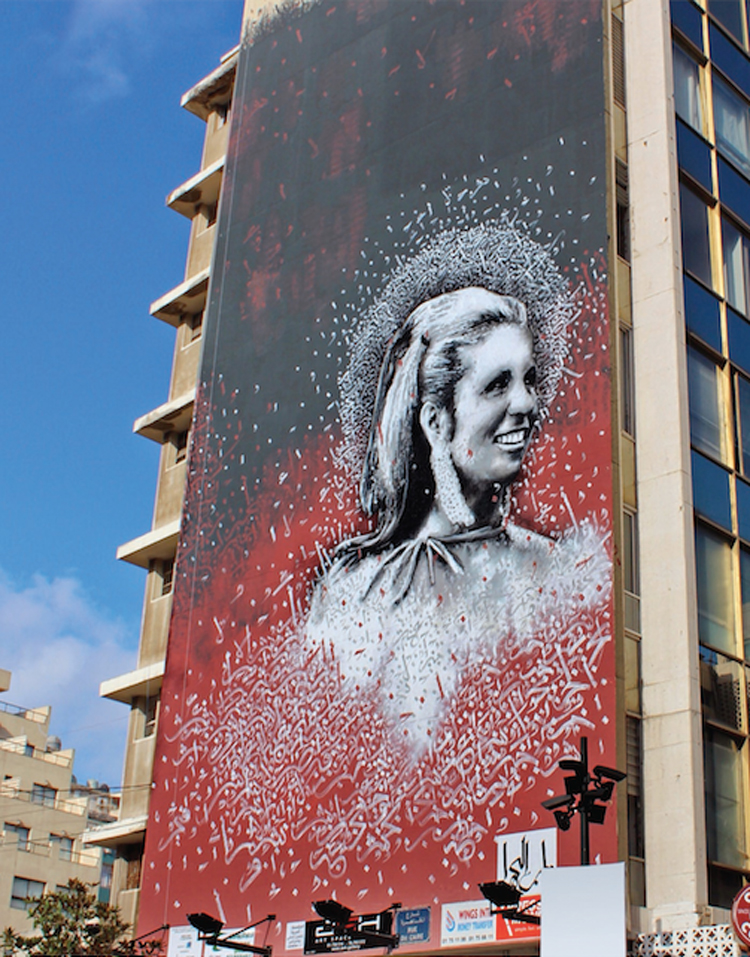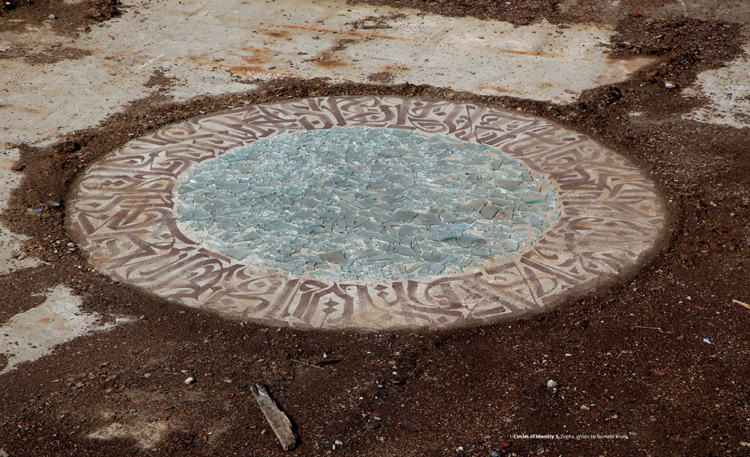Street Artist Tamara Zantout set out to discover what it means to be Lebanese with her new art book Drawing Lines.
By Charline Deek
The Lebanese born artist spent much of her life in London but recently returned to Lebanon where she found herself missing a sense of identity. Zantout turned to what she knew best – graffiti art. She set out to capture the best of the street art from the Lebanese city of Beirut and spent two and a half years documenting the art and meeting the artists. She toured the city with photographers Bernard Khalil and Loryne Ataoui, as well as French artist Zepha, who actually wound up creating his own piece of art in the city at the former Grande Brasserie du Levant.
The result was Drawing Lines, which launched in Dubai last month. An exploratory book that aims to discover the true meaning of Lebanese identity while celebrating the local works of art. Here we talk to Zantout on creativity and the journey of rediscovering herself.
How would you define yourself as a person?
How do we define ourselves? That is the ultimate question. But I suppose if I had to define who I am, I am an author but also a designer, with a very powerful and creative drive. I find ultimate satisfaction in creating, whether it is through design, music, production or writing. Even painting is a powerful creative release for me. Ultimately I have to say I am also defined by the fact that I am a pilot, it is a passion that consumes me, and I definitely feel I am most myself when I’m flying.
Where did the inspiration for Drawing Lines come from?
I spent most of my childhood in London and when I returned to Lebanon I found that the country I had grown up in and the one I was experiencing today was completely different. I chose to write a novel to answer my own struggle with Lebanese identity and what it meant to me. Through my background in Urban Planning, I decided that the greatest way to express this would be through the streets. In establishing people’s daily struggles and habits the focal point became street art. It was a natural transition to create an art book.
What is the purpose of the book?
I have worked with graffiti artists for a long time. Since 2013 the Urban Fusion was a platform for design and street art, and I had a very close professional relationship with many artists and connected with their work and what they were trying to express.
The book was a bid for self-reflection and ultimately it developed into researching identity through the lens of graffiti. To come to terms with the notion of Lebanese identity. It was a question I not only had asked myself, but friends of mine who had lived abroad were waiting for my book to answer their own queries on their sense of identity. For many of the Lebanese expats who feel torn between both worlds, it can be quite daunting as you don’t really know where you belong.
What would you say distinguishes Lebanese artists from others?
People in any country dealing with the memories of war have poignant things to say. Street artists in Lebanon were somehow impacted by the war and have a lot to say about rebirth and resistance to the current status quo. Even with the generation that hasn’t been directly touched by war, they lived it through their parents or grandparents.
Aside from this, as the social landscape of Lebanon is so diverse based on many religions and influences from different countries in the west, their stories are quite unique.
What can you tell us about your exploratory trip through the streets of Beirut?
As a group consisting of myself, Lebanese photographers Loryne Atoui and Bernard Khalil and French street artist Zepha, we explored the streets of Beirut in search of our notion of Lebanese identity and came across three key locations that best reflected it. As someone who isn’t Lebanese, Zepha heard sounds we had phased out as we were so accustomed to them and he saw things very differently from the rest of us.
It definitely served its purpose to redefine our preconditioned notion and reformulate our reflection on identity. We created six installations that most reflected that.
What lessons can we learn from reading the book?
Essentially the book concludes that there are many circles of identity all-encompassing each other. As tolerance expands our circle is broadened and through understanding our differences we can essentially understand that despite those differences we are all the same.
What challenges did you face when working on the book?
While doing research for the book and interviewing artists, data collection was definitely the most challenging part. Certain graffiti murals no longer existed or were removed. Luckily I found a graphic design student who had done her final project on graffiti and she had some of the missing original pictures.
As an artist what is your message to others?
It is a message of tolerance and aspirations to see Lebanon uniting all its people into a true sense of patriotism and belonging.
Who is your favourite artist or piece of art?
I definitely have a special affinity to the chained man mural “Change What The Elders Couldn’t” by Said Mahmoud and Karim Tamerji because I genuinely agreed with what they had to say and felt it came from a place of genuine emotion.
On a non-graffiti level, I also connected with the piece by Sandra Kheir called “The Cedar in Us”. It portrays a pregnant woman with the Cedar embedded within her and talks about the fact that a Lebanese woman cannot give the Lebanese citizenship to her children, which in our day and age I find a ludicrous concept that must be changed.
If you were to create a piece of art on a Beirut wall, what would it be?
Perhaps as a conclusion to the book, it would be “Aspire to be One”.
What colours would you use to paint the painting of your life and why?
For me, red is the colour of passion and of life. It would definitely be a predominant part of my painting. So would the shades of the sun.
How would you like the world to remember you?
I would like to be remembered most of all for my resilience. To know that what one wants to achieve is never out of reach, passion is the essence of all things.
Complete the following:
Art is… the greatest form of catharsis, creating beauty from pain.
Travel is… the greatest adventure and the path to self-discovery.
Books are… the window to the soul.
Lebanon is… a country filled with contradictions, beauty and pain, resilience and denial.




















